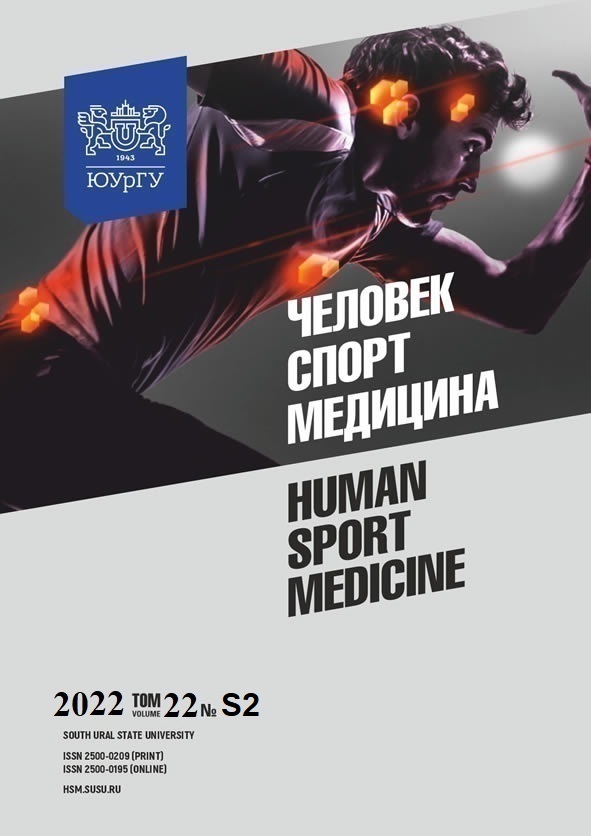ADAPTATION OF UNIVERSITY STUDENTS WITH HEALTH CONDITIONS TO APPLIED PHYSICAL EDUCATION
Abstract
Aim. The paper aims to justify the use of applied physical education for the development of applied adaptation in university students from different health groups. Materials and methods. The study involved engineering students (South Ural State University, National Research University), who formed
the experimental and control groups of 15 people each. Male and female university students with different health conditions participated in the study, including university students with musculoskeletal disorders (3 males and 4 females), myopia/eye disorders (3 males and 2 females), hearing loss/ear disorders (1 male and female), internal organ disorders (7 males and 5 females), and endocrine system disorders/diabetes (2 males and 2 females). The following methods were used for the purpose of the study: the Serkin test, the Martinet test, the Romberg test (a 2 phase test with a gradual decrease in the support area), the PWC170, and the VO2max. Results. The parameters used create the prerequisites for success in the professional activities of students of all health groups. This concept must be implemented within higher education to increase adaptive capabilities, especially in students with health conditions. Conclusion. Applied physical education is more convenient for university students with health conditions, since there is no need to achieve
a comprehensive, harmonious or maximum development of physical abilities, as provided for in basic physical education and sport.
References
References on translit
Copyright (c) 2023 Human. Sport. Medicine

This work is licensed under a Creative Commons Attribution-NonCommercial-NoDerivatives 4.0 International License.















